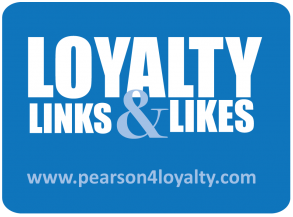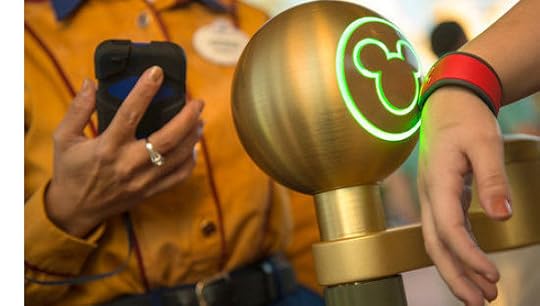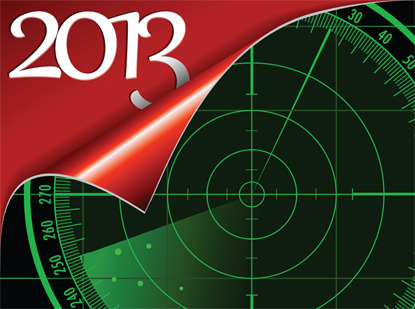Bryan Pearson's Blog, page 51
January 18, 2013
Lighting the Lamp on Loyalty: How the NHL Can Win Back Fans
How the NHL Can Win Back Fans
1/17/2013

Fans of hockey may warmly welcome players as they return to the ice after a 113-day strike, but for the leaders of the National Hockey League, winning fan loyalty again may require something akin to a hat trick.
That won’t necessarily be easy. The loyalty that exists for a sport does not typically extend to the league. Diehard fans follow and root for the players and teams – there are in fact few other entities to which a fan may be more loyal. League Commissioner Gary Bettman, meanwhile, has presided over three lockouts since he took the post in 1993, an association that may inexorably link him to less sportsmanlike elements of the game, such as salaries, perks and contracts.
Indeed, winning loyalty will take more than a few tricks of any kind. The NHL would be well advised to implement the proven techniques to win over some of that loyalty that fans reserve for the game, not the league. Here are my four suggestions on how to build engagement when loyalty may be wavering:
Don’t ice out the fans – communicate: The NHL knows that its roughly 20 million avid fans are tech-savvy – the game already reaches them across several digital channels. Next, the NHL should tailor its messaging across these channels using language that will recognize fans in a straightforward way. Bettman took a good first step when he apologized to the players and fans, saying the NHL “has a responsibility to win back your trust and support, whether you watch one game or every game.” The outreach should not stop there. The league should regularly update fans on special events and promotions (created to win their trust and support), and inform ticket holders of what to expect in the abbreviated 48-game season.
Treat season ticket holders like VIPs: While the NHL doesn’t have a loyalty program through which to collect data, it is able to gather information about its season ticket holders. It knows, for instance, that more than half of its fans live outside the city of their favorite team, meaning that the characteristics that unite them as a culture are not necessarily geographical. It must use this information to ensure that these most dedicated fans remain loyal. The Tampa Bay Lightning, for instance, is offering 200 season tickets for $200, while the Pittsburgh Penguins are giving free select concessions at the team’s first four home games. But these are team promotions, and are not NHL-wide. There was some talk that NHL would offer its “Center Ice” cable package for free, this turned out not to be the case.
Save face with some show time: The first game back should be a celebration of the season, and a thank-you to the fans who attend or watch. A surprise live-entertainment act between periods – one that aligns with fan preferences – could create the same type of hype as a playoff game. A special concession-stand deal, such as shorter lines or lower pricing for ticket holders, would make loyal fans feel recognized. Such offers could also attract or win sponsors that may be wavering on their commitments.
Improve goodwill by doing good – and meaning it: The team’s front office and players have an opportunity give back in a genuine way to the fans who support them. For example, the NHL can add more resources and promotion to existing charitable efforts or start new initiatives, and possibly foundations. It’s important that these be long-term efforts to which the league is committed, and not a marketing ploy. Fans would see through that and send the NHL right into the penalty box.
NHL lockouts have tried the loyalty of NHL fans three times. Let’s hope there is not a fourth. In the meantime, the league should do all it can to limit the real tricks to the ice.


Bryan Pearson is a COLLOQUY Contributing Editor, president and CEO of LoyaltyOne and author of The Loyalty Leap: Turning Customer Information Into Customer Intimacy. Follow Bryan’s blog at www.pearson4loyalty.com.
January 16, 2013
January 16: Loyalty Links & Likes
 Here are a few loyalty links that caught my eye this week.
Here are a few loyalty links that caught my eye this week.
1. Why Airline Loyalty Programs Aren’t Loyal to Frequent Fliers — Huffington Post
Though I’d argue that not all airlines fit the picture the author paints, the story does show the ramifications of a loyalty program gone wrong.
2. Tip of the Week: Store Cards on Phone — The Wall Street Journal
The author suggests storing loyalty cards on your phone as a way to ensure their use and ultimately save money. For a deeper look into the mobile wallet world I recommend Phaedra Hise’s “Unfolding the Mobile Wallet.”
3. Google Introduces Digital Couponing and Loyalty Solution “Zavers” — Marketing Land
Paper-friendly program targets large brands and national retailers with online coupon distribution and streamlined redemption.
4. Case Study: San Diego Smoothie Chain Favors Loyalty Over Acquisition — Street Fight Magazine
Shake Smart ditches old push-card program after defrauding. The smoothie chain now operates a healthy loyalty program via a phone app.
5. Meijer Customer Service Saves The Day After Surgery — The Consumerist
Here’s yet another example of superior customer service leading to customer loyalty.
January 14, 2013
Disney’s New MagicBands: The Fairest Technology of Them All

Source: Disney
It’s like the glass slipper on the foot of a hopeful marketing movement: Disney’s plan to use encoded wristbands to ease access to its bustling parks not only will eliminate the need for turnstiles and cash, it will give Disney a magic mirror into its visitors’ preferences and needs.
The technology, called MyMagic+, involves rubber RFID bracelets (MagicBands) that carry credit card information and other data visitors would use during visits to the park. According to a story in The New York Times, the program is part of a larger plan, estimated to cost anywhere from $800 million to $1 billion, to make trips to Disney less exhausting for its 30 million annual visitors. The logic is that happy customers will spend more money, gladly.
And with the MagicBands, Disney can follow just how that money is being spent, from Mickey Mouse waffles to Dumbo the Flying Elephant ride to, inevitably, a few glasses of wine. As Thomas Staggs, chairman of Disney Parks and Resorts, told the NYT: “If we can enhance the experience, more people will spend more of their leisure time with us.”
More leisure time means more consumer activity for Disney to track, and more information with which to tailor its marketing messages. This may raise concerns among privacy advocates, especially since Disney is primarily a children’s attraction. But the entertainment company said visitors would have the power to control just how much information they share, from their name to whether they want offers sent to their home. Guests aren’t even required to use the MagicBand system.
For those who do, MyMagic+ offers the chance to preselect FastPasses for certain rides, and VIP seating for events such as fireworks or special meetings with Disney characters. The MagicBands work as room key, FastPass, credit card and other uses (though guests will have to enter a PIN when making purchases of more than $50).
I anticipate there still will be some push back among privacy advocates. But progress will march on, and this step by Disney is ambitious and carefully considered. MagicBand embodies many of the qualities that define a good value exchange – one where both the consumer and the brand benefit equally. It promises to enhance the consumer experience by eliminating obstacles to enjoyment, while providing Disney access to highly detailed consumer insights so it can deliver more meaningful experiences. And it empowers customers to choose what information they want to share at various levels.
Granted, this kind of enabling technology is not completely new – Vail Resorts in 2008 officially introduced RFID-enabled ski passes. But Disney, through its attention to privacy and execution, has taken it to a new level.
The next hurdle will be training its 60,000 employees to use the technology. If, afterward, Disney can look in the mirror and say, “This is the fairest deal of all,” then consumers should win, and the whole kingdom might be happy.
January 9, 2013
January 9: Loyalty Links & Likes
 Here are a few loyalty links that caught my eye this week.
Here are a few loyalty links that caught my eye this week.
1. Is Brand Loyalty Dying A Slow And Painful Death? — Forbes
The author mentions the decline of brand loyalty and discusses the power of price in purchasing decisions.
2. Loyalty has its rewards both for operators and customers — Fast Casual
This story focuses on the restaurant industry and offers tips for companies in making their loyalty programs more effective.
3. The changing consumer-retailer relationship: interview with Panasonic — the guardian
Panasonic’s customer service leader dishes on efforts to improve customer service through new technology.
4. Dodgers exploring rewards program for using social media sites — Los Angeles Times
The baseball team is looking into a “Social Media Loyalty” program that would reward fans for social media interaction.
5. A Look Under the Loyalty Hood — CRM Magazine
I’m sharing this link because it includes practical advise for businesses on how to make their loyalty programs run smoothly.
January 7, 2013
In a Multi-Channel World, Data Wins the Cautious Consumer
 I remember when we purchased our first washer and dryer. My wife and I entered the store on a Saturday, found what would do the job in our price range, discussed a warranty, and within an hour we were on our way home awaiting delivery.
I remember when we purchased our first washer and dryer. My wife and I entered the store on a Saturday, found what would do the job in our price range, discussed a warranty, and within an hour we were on our way home awaiting delivery.
Today, thanks to catalogs, websites, smartphones and tablets – not to mention the actual store – that transaction may have extended to the following Tuesday, or 10 days.
This is the finding of a report by research groups Conlumino and Webloyalty, which suggests that multichannel shopping actually doubles the time it takes for consumers to make certain household purchases.
According to the report, Thriving in a Multichannel World, Part 2: Home, almost 41 percent of consumers consult multiple channels before buying big-ticket home items, such as appliances. As a result, the time it takes the average shopper to make such a purchase has extended to 10.3 days from 5.2 days a decade ago. Those extra 5.5 days are presumably used for research.
But those added 5.5 days also represent a chance for a sale to be lost due to many circumstances, from a marital spat to a leaky roof.
In a story about the research, Conlumino retail analyst Neil Saunders said, “Retailers need to plan carefully for how they provide greater consumer engagement throughout this process.”
I’ll take it two steps further. I think there are many ways merchants can use the data they gather through their loyalty plans to shorten the buying time. The trick is to take advantage of these insights and technologies the moment the consumer enters “the system,” regardless of channel.
First step: The merchant needs to collect the right data and invest in the resources to analyze it not merely as a record of transactions but as a window into its customers’ motivations. If a merchant uses its data to better understand its customers, their needs, shopping patterns and what they value, it can create the right proposition for them earlier in the process. The merchant can highlight special bundles or service enhancements, for example, which could move the conversation from that of pure price to a richer, more rounded experience.
This strategy won’t always capture every customer since some will buy purely on price, so let’s proceed to the next step: relationship building. It’s an odd word in today’s retail environment, but that old standby – trust – does come into play. If the retailer stands behind the products it sells, supports its workers and recognizes its customers with personalized experiences, that relationship factor – that trust – will inspire emotional loyalty, which should be enough to sway the consumer’s choice to that brand.
For example, once the merchant understands the customer’s buying process it can insert itself into that activity with reassuring add-ons that solve core customer concerns. If the data indicates that prestige, or fear of failure, are critical ingredients to the decision process, the merchant can highlight price guarantees or provide an extended warranty. As a result, its best customers will feel more secure purchasing the product from someone they know.
Consumers may wait days to buy something, but merchants should act now. Fortunately, regardless of the latest technology, the foundational principles that win loyalty have not changed. Merchants have the power to engage the shopper beyond the digital screen.
January 2, 2013
January 2: Loyalty Links & Links
 Here are a few loyalty links that caught my eye this week.
Here are a few loyalty links that caught my eye this week.
1. 5 Customer Service Lessons From Winnie-the-Pooh — Forbes
Turns out Winnie-the-Pooh can teach us lessons well past childhood. Just like honey, these customer service lessons can really stick — they work wonders in building loyalty.
2. Building customer loyalty: Online retailers like Groupon, Zivame & Goibibo directly interacting with consumers — Economic Times
The competitive virtual marketplace makes winning customer loyalty particularly important for online retailers. This story discusses their efforts to build loyalty.
3. 12 Sneaky Ways That Big Retailers Track Your Every Move — Business Insider
I’m sharing this link because it details some interesting ways retailers are collecting data including creating heat maps to show high-traffic areas in stores.
4. Loyalty programs save time and money —Mail & Guardian
This story offers a look into the use and benefits of loyalty programs in sub-Saharan Africa.
5. Retailers increasingly turn to loyalty programs to better target consumers — The Commercial Appeal
The reporter mentions the proliferation of loyalty programs at the retail level and speaks with consumers for insights into preferred programs.
IndiaTechOnline Book Review
Book Review: From customer information to customer intimacy
The Loyalty Leap: By Bryan Pearson; Portfolio/Pengiun/2012; $25.95
by Anand Parthasarathy
Loyalty is easier acquired than retained. All the big enterprises from airlines and hotels to branded stores and web malls know that it is relatively simple to sign up customers into loyalty clubs at first or second encounter. But then the customers start to compare. They get tempting offers from rival loyalty programmes. Sometimes they hedge their bets by joining multiple loyalty schemes. I myself am a member of four airline frequent flyer clubs – two domestic and two international – because there is no way one airline or even an alliance of airlines is going to cover all my flying needs. So why not have a back-up or two up one’s sleeve.
This is fine from the customer’s point of view ( though I do have a problem when I can’t bundle the miles from multiple programmes to redeem them for a long trip). But think of this as a challenge for the airline or for that matter of any loyalty offering. Bryan Pearson does just that – and he should know. He is the president and CEO of LoyaltyOne, a respected international name for loyalty strategies and programme advice. He heads six global enterprises including the Canada-based AirMiles rewards programme and after 20 years in the business , has crystallized the challenge of loyalty schemes into three Vs – Value, Visibility and Voice. Give the customer real value, not humbug; drill deep into your customer data to make his or her preferences visible – and create a platform for communication with your customer.
Enterprises who have successfully ‘mined’ their customer data have reached rich rewards: If you are a member of Mileage Plus, United Airlines knows whether if you will spend $25 extra to check in a suitcase. Verizon’s phone records tell them how often you call your other. Hilton knows the instant a regular gues checks in, whether he or she prefers a higher floor or a non smoking room.
This is the crucial difference between just collecting data and putting it to productive use, turning customer information into customer intimacy.
But Pearson is also a realist – and admits that customers can only be acquired, churned, and reactivated so many times before they get bored with your brand and feel footloose, ready to move on. The Loyalty Leap tries to suggest how this loyalty period can be stretched to the maximum.
Technology is often the key today. Location based marketing, online real-time tracking, are just two currently popular tools deployed to reach customers where-ever they may be. The four key behavioural dimensions of the customer can be likened to four doors marked Spatial, Temporal, Individual and Cultural. Seal these four doors, Pearson suggests, and you have successfully transformed the customer’s material loyalty ( for whatever goodies you offer) to one of emotional loyalty ( in good times and bad).
The Loyalty Leap is a racy, stimulating read for anyone who has to work on the marketing side of the Loyalty game – and I dare say for many ‘loyal’ customers as well.
December 26, 2012
December 26: Loyalty Links & Likes
 Here are a few loyalty links that caught my eye this week.
Here are a few loyalty links that caught my eye this week.
1. How free online returns can spark shopper loyalty — The Washington Post
Something simple online retailers can do to increase customer loyalty efforts.
2. 8 predictions for direct marketing in 2013 — Direct Marketing News
News editor, Al Urbanski pulls together a collection of marketing trends predictions — all have customer loyalty implications.
3. Retailers step up as Target raises bar for loyalty cards — The Globe and Mail
The entry of Target into the Canadian retail landscape is stirring the loyalty program waters.
4. 2012′s Great Moments In Hotel Customer Service — Huffington Post
It’s always nice to read about specific instances of superb customer service, especially when they grow customer loyalty.
5. Loyalty will be punished! — The Guardian
With the good comes the bad. The author explores circumstances where customer loyalty is actually costing faithful consumers.
December 19, 2012
December 19: Loyalty Links & Likes
 Here are a few loyalty links that caught my eye this week.
Here are a few loyalty links that caught my eye this week.
1. Under the Radar: Ten Trends Loyalty Marketers Might Not See Coming in 2013 — COLLOQUY
COLLOQUY’s new Editorial Director, Carlos Dunlap, zeroes in on loyalty marketing trends for 2013. You can download the full report here — it’s free.
2. Simple Tools Help Owners Sift Data for Eager Customers — The New York Times
This story is all about the data. It cites examples of companies harnessing customer data, including both Web-based businesses and traditional retailers.
3. Loyal Customers Are Not to Be Trifled With — CRM Buyer
“3 Big Don’ts” for companies looking to boost loyalty and in turn profitability.
4. Will 2013 Be The Year of Loyalty Programs? — Forbes
The author explains why the proliferation of new loyalty programs this year is only a sampling of what’s to come.
5. The Right Customer Loyalty Program for You — Dealer Marketing Magazine
Customer retention vs. customer acquisition. The author details why retention matters most and how loyalty programs can help.
December 17, 2012
The Future of Loyalty Rests in Unexpected Places
 If you think that social media, group buying and word-of-mouth are the key trends that will shape loyalty marketing in 2013, I’ve got a few new phrases for you: Friend, Blend, Spend; Glocalism; and MomPopolies.
If you think that social media, group buying and word-of-mouth are the key trends that will shape loyalty marketing in 2013, I’ve got a few new phrases for you: Friend, Blend, Spend; Glocalism; and MomPopolies.
These three terms each explain an emerging event on our horizon; a phenomenon with the potential to change the way we do business. Yet many marketers do not see these occurrences approaching, because they are preoccupied by more obvious trends such as the uncertain economy, mobile marketing and fickle consumers.
In short, these phenomena are just under the radar.
But just like an undetected storm, their stealth makes these events no less consequential to the course of loyalty marketing. Rather, those companies astute enough to identify and respond to these events in advance not only will ensure their own long-lasting fate; they will have a hand in shaping how marketers can influence consumer behavior.
COLLOQUY, the global research arm of LoyaltyOne, has in fact identified 10 such events that will define the future of loyalty marketing. In his report, “Under the Radar: Ten Trends Loyalty Marketers Might Not See Coming in 2013,” COLLOQUY Editorial Director Carlos Dunlap suggests that organizations might be distracted by the wrong problems.
“While business leaders strategize on how to manage location-based marketing, social media and the fiscal cliff – all while struggling to connect with customers who are rapidly losing interest – they may be missing 10 industry-changing trends that are emerging under the radar,” he writes.
I couldn’t agree more. Here is a glimpse of what Carlos outlines in his report:
1. Friend, blend, spend (the open-loyalty economy): Loyalty programs have become so abundant, and many so cookie-cutter, that consumers have come to see them as a commodity. As a result, members are expecting more cash-like rewards that are easier to redeem. Marketers have begun to respond, and the result is an emerging “open loyalty economy” of points sharing, pooling and universal redemption.
2. Glocalism: Many corporations sell the same products around the globe, but they tweak them slightly to accommodate different cultures and languages. That’s Glocalism. But under the radar, Glocalism represents how events on the other side of the globe, from natural disasters to financial turmoil, can affect businesses at home. It is, as Carlos describes, “the butterfly effect on fiber optic wings,” and companies need the infrastructure to respond.
3. The Rise of MomPopolies: This is a great time to be a small business. Online innovations from social media to transaction-processing technologies have essentially leveled the field for independent business. They’ve created what we call MomPopolies – Mom-and-Pop shops that have the engagement power to compete with major competitors, yet maintain their local edge.
So how do you respond to these phenomena? To read the report, and to learn of the other seven events taking place, visit www.colloquy.com/loyaltytrends.
Bryan Pearson's Blog
- Bryan Pearson's profile
- 4 followers



